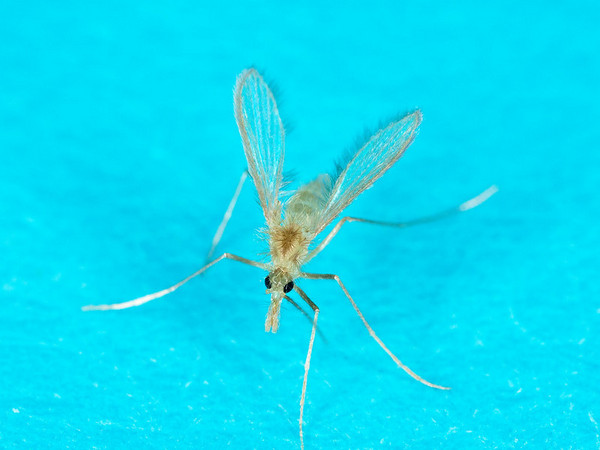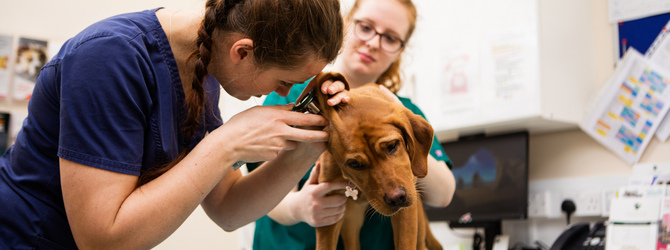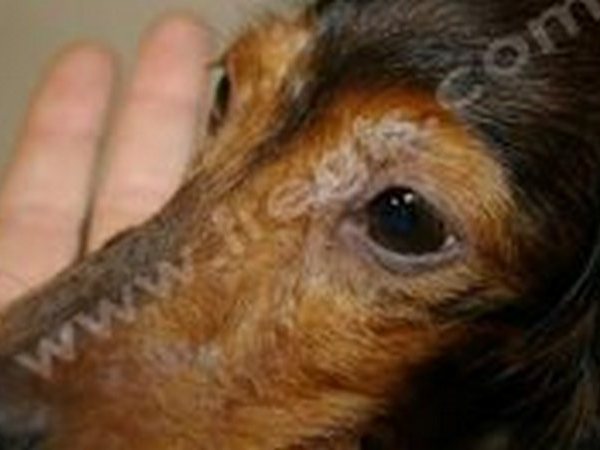Leishmaniasis in dogs: symptoms and treatments
What is leishmaniasis in dogs?
Leishmaniasis in dogs is a disease caused by a tiny parasite called Leishmania infantum. This parasite infects cells in a dog's body and is transmitted through the bite of a particular type of sandfly. The sandfly can transmit the disease to other dogs, rabbits, hares, cats, and even humans. Sandflies are mainly active from April to October and usually live around the Mediterranean, but there has been an increase in the disease spreading to other regions in recent years.
Brief summary
- Canine leishmaniasis is a serious chronic parasitic disease mainly affecting dogs (but also rabbits, hares, cats, and humans)
- It’s transmitted by the bite of a Phlebotomus sandfly
- It mainly occurs in the Mediterranean area, with rare isolated cases elsewhere
- Preventive measures such as vaccination and insecticidal collars are necessary to protect dogs at risk
- There's no cure for leishmaniasis in dogs but symptoms can be managed with medication
Are dogs in the UK at risk from leishmaniasis?
The sandflies responsible for spreading leishmaniasis aren’t found in the UK, so the risk of your dog getting this disease is very low if they don’t travel outside the UK. Transmission between dogs is very rare, however, a few cases have been reported where dogs got leishmaniasis without travelling to places where these sandflies live. This means that while the risk is still low, it's not impossible, especially as more dogs are being brought into the UK from other countries.
What about dogs in France?
According to our colleagues at Fregis, it’s estimated that approximately 200,000 dogs in France are infected with the Leishmania infantum parasite. However, not all infected dogs will develop the disease. Roughly one sick dog is reported for every three to five dogs infected by the parasite.

Image of a Phlebotomus sandfly — ©US Department of Agriculture, photo by Stephen Ausmus — source
Are all breeds at risk from leishmaniasis?
Leishmaniasis can potentially affect any dog breed. However, certain breeds are at a higher risk of developing the disease due to their immune response and genetic predispositions. Factors such as age, breed, genetics, nutrition and general overall health can impact whether it progresses from infection to serious clinical disease.
Certain breeds including Boxers and Doberman Pinschers are more likely to develop symptoms of leishmaniasis if infected. This may be due to differences in their immune response. A study on dogs in Ibiza found big differences in leishmaniasis prevalence between breeds.
Leishmaniasis symptoms in dogs
Symptoms of the disease develop in the months following the sandfly bite. Some dogs can have the parasite in their body for many years without showing symptoms. When symptoms do develop, they can vary a lot.
- Skin issues such as hair loss, scaly skin, ulcers
- Lethargy
- Weight loss
- Drinking more water than usual
- Nosebleeds
- Eye problems
How do vets diagnose leishmaniasis in dogs?
To diagnose leishmaniasis, vets typically rely on a mix of the dog's symptoms and specific tests. The process can vary depending on what symptoms the dog is showing. Usually, it involves blood tests and taking samples from different parts of the dog's body, like the skin, lymph nodes, or internal organs.
These tests help identify the Leishmania parasite or signs of its presence in the dog's body. The variety of symptoms and the need for specific tests can make a clear diagnosis challenging, so vets use these combined methods to confirm if a dog has leishmaniasis.
Understanding leishmaniasis stages in dogs
After diagnosing your dog with leishmaniasis your vet will categorise the disease into stages for the right treatment.
| Stage | Clinical signs | Lab findings | Treatment | Prognosis |
|---|---|---|---|---|
| Stage 1 (Mild disease) | Minor skin issues or swollen lymph nodes | No significant lab abnormalities | Regular check-ups | Generally good |
| Stage 2 (Moderate disease) | More noticeable skin issues, appetite and weight loss | Mild anaemia and other mild changes | Specific medications like Meglumine antimoniate and allopurinol | Variable, depending on kidney function |
| Stage 3 (Severe disease) | Severe symptoms including kidney issues | Significant lab abnormalities, kidney disease | Aggressive treatment and follow-up | Cautious to poor |
| Stage 4 (Very severe disease) | Extreme symptoms including lung and kidney problems | Advanced kidney disease | Intensive treatment, individualised care | Poor |
Leishmaniasis in dogs treatment
Treating leishmaniasis in dogs largely depends on how the disease affects the dog. For example, treatment might not be necessary for dogs with no symptoms despite being infected. However, most dogs with leishmaniasis will need medication. Usually, this involves a combination of drugs.
It's important to note that while treatment can control the disease, it doesn't completely cure it, so there's a chance your dog might have symptoms again after stopping medication. Vets typically monitor dogs closely during and after treatment and may restart medication if early signs of the disease reappear. This approach helps manage the disease effectively, although it's not a permanent cure.
Pictures of dogs with leishmaniasis
What’s the prognosis for dogs with leishmaniasis?
Even though there have been advances in treatment over the past decade, canine leishmaniasis remains a serious disease. The prognosis is good in dogs with few parasites and mild symptoms (stage 1). But for severe forms with renal failure (stage 4), the prognosis is poor.
How can I prevent my dog from catching leishmaniasis?
Preventing canine leishmaniasis largely depends on where your dog lives or travels. No special steps are needed if your dog isn't a disease carrier and doesn't visit high-risk areas. However, if you plan to take your dog to an area where leishmaniasis is common, using insecticides that repel sandflies is vital. These insecticides come in various forms, and following their usage instructions is important. Also, keeping your dog indoors when sandflies are most active, especially at dusk, helps reduce the risk of bites.
Vaccination has become a key preventive measure for dogs living in or often visiting high-risk areas since its introduction in 2011. This vaccine doesn't stop infection but reduces the risk of symptoms developing.
Regular medical checks and blood tests are vital in already infected dogs that don't show symptoms. Using insecticides is also still important for these dogs, but they shouldn't be vaccinated.
Is there a vaccination for leishmaniasis?
The vaccine, suitable for dogs from six months old, requires a preliminary health check to ensure the dog isn't already infected. The vaccination process usually involves three injections three weeks apart and an annual booster. It's recommended to deworm your dog before vaccination and not to combine it with other vaccines — maintain a gap of at least two weeks.
Protection kicks in about four weeks after the last shot. If you're taking your dog to a risk area, start the vaccination process around 2.5 months before your trip. Some dogs may show mild reactions to the vaccine, like a local reaction, tiredness, or fever.
Can humans catch leishmaniasis from dogs?
No, humans can’t catch leishmaniasis directly from dogs. The disease is transmitted by the bite of a specific type of sandfly, which is a crucial part of its transmission cycle. Since these sandflies are not present in the UK, the risk of humans getting leishmaniasis in this region is extremely low.
Any studies into leishmaniasis in dogs?
One 2022 study named Canine Leishmaniasis: Update on Epidemiology, Diagnosis, Treatment, and Prevention revealed that the disease is spreading to the northern hemisphere, largely due to climate change and dog movements. It found that advances in diagnostic tools, including molecular techniques and rapid tests, have improved disease detection.
It also stated that while several vaccines have been developed recently, their effectiveness is limited, indicating a need for better future vaccines. Current treatments also struggle to eliminate the parasite and prevent transmission without side effects, highlighting the search for more effective treatments. The study emphasised the importance of ongoing surveillance to monitor the disease's spread and the emergence of sandflies in new regions.
Another study from 2018 titled Canine Leishmaniasis: An Overview of the Current Status and Strategies for Control found that canine leishmaniasis can range from mild to deadly. Treatment doesn’t always work, and the disease often comes back. It went on to conclude that the best way to prevent it is by using a combination of vaccines and insect repellent products. The disease's symptoms and effects can vary a lot, making diagnosis and treatment challenging. Efforts are ongoing to understand and manage this complex disease.
Need more advice on leishmaniasis?
Contact your vet if you need further advice on leishmaniasis – they’ll always be happy to help.
Find your nearest vet using our find a vet page, or speak to a vet online using our video vet service.





